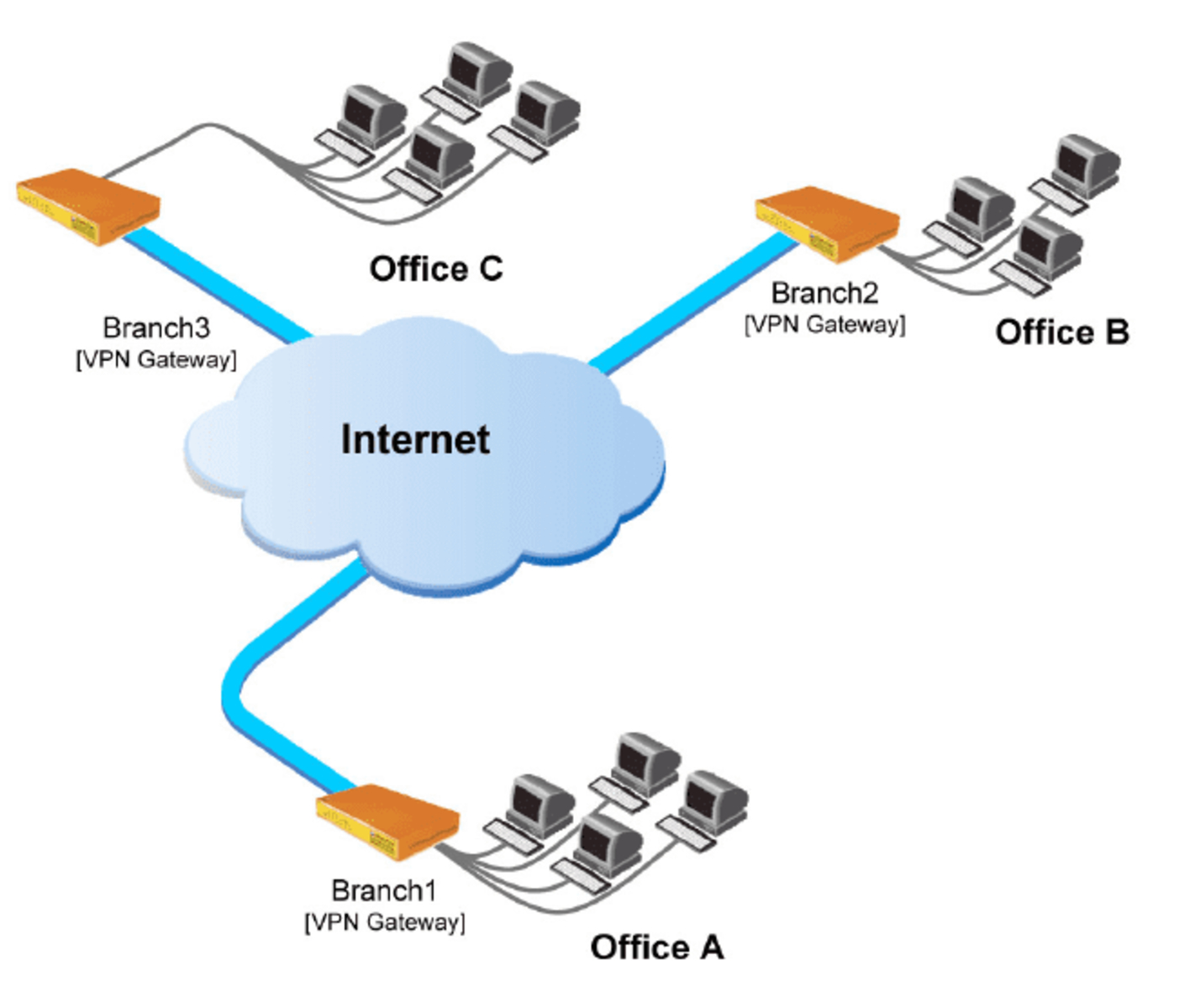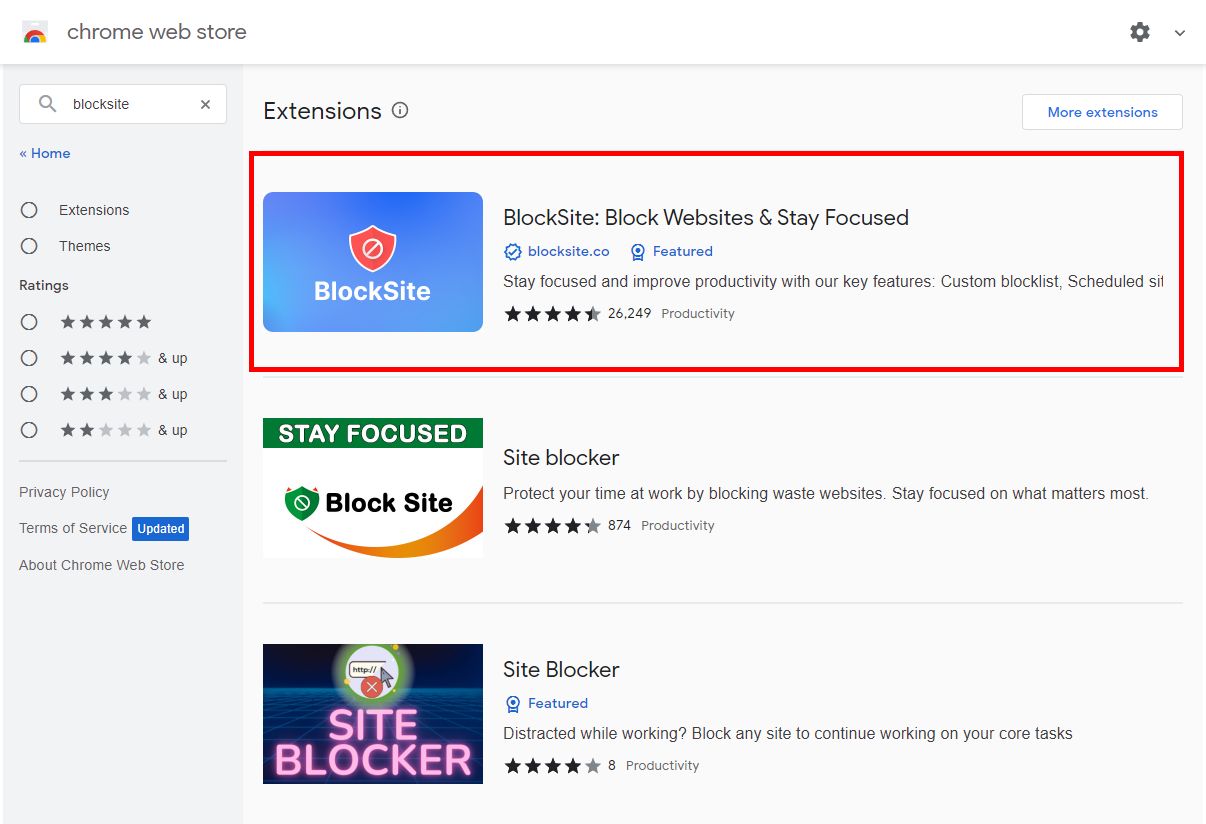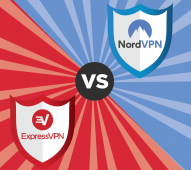What Is A Site To Site VPN
A Site-to-Site Virtual Private Network (VPN) is a secure connection that allows multiple local networks in different physical locations to communicate with each other over the public internet as if they were connected by a private network. It enables businesses to establish a reliable and encrypted connection between their office locations, providing a seamless and secure way to transmit data across distances.
A site-to-site VPN works by creating a tunnel between the two locations, encrypting all data that passes through it. This ensures that any sensitive information, such as financial records or customer data, remains secure and protected from unauthorized access.
With a site-to-site VPN, businesses can enjoy a range of benefits. Firstly, it provides a high level of security, as the data is encrypted and protected from interception. It also allows for improved data privacy, as the traffic transmitted through the VPN tunnel is isolated from the public internet. This is particularly important for businesses that deal with sensitive information.
Additionally, a site-to-site VPN enables seamless communication and collaboration between different office locations. Team members can access shared files, databases, or resources across various sites without the need for complex network configurations or physical presence on-site. This enhances productivity and efficiency, especially for businesses with geographically dispersed teams.
Furthermore, a site-to-site VPN offers a cost-effective solution for businesses that require secure connectivity between multiple locations. Instead of relying on expensive leased lines or dedicated connections, a site-to-site VPN leverages the existing internet infrastructure, reducing costs while maintaining security and reliability.
Overall, a site-to-site VPN is a crucial tool for businesses with multiple office locations. It enhances security, provides seamless communication, improves data privacy, and offers cost-effective connectivity. By leveraging these benefits, businesses can operate efficiently and securely in an increasingly interconnected world.
Introduction
In today’s digital age, businesses are increasingly reliant on secure and efficient communication between multiple office locations. Whether it’s a multinational corporation with branches across different countries or a small business with remote teams, the need for a reliable and secure connection is paramount. This is where a Site-to-Site Virtual Private Network (VPN) comes into play.
A Site-to-Site VPN allows businesses to establish a secure and encrypted connection between their office locations, regardless of physical distance. It offers a seamless way to transmit data between different sites as if they were connected by a private network, utilizing the public internet as the medium of communication.
With the advancements in technology and the increasing reliance on cloud-based services, traditional methods of connecting multiple office locations, such as leased lines or dedicated connections, have become inefficient and costly. On the other hand, a site-to-site VPN provides a cost-effective solution by leveraging the existing internet infrastructure without compromising on security.
By encrypting all data transmitted through the VPN tunnel, a site-to-site VPN ensures the confidentiality and integrity of the information being shared between office locations. This is particularly important for businesses dealing with sensitive data, such as financial records, customer information, or trade secrets.
Beyond security, a site-to-site VPN facilitates seamless collaboration and communication between different office locations. Team members can access shared files, databases, or resources across various sites, enabling them to work together effectively even when physically separated. This not only enhances productivity but also reduces the need for complex network configurations or physical presence at each location.
Whether it’s for internal communication, accessing shared resources, or maintaining a consistent network environment, a site-to-site VPN proves to be an indispensable tool for businesses with multiple office locations. It combines the benefits of enhanced security, improved data privacy, seamless communication, and cost-effective connectivity, allowing businesses to operate efficiently in today’s interconnected world.
Definition
A Site-to-Site Virtual Private Network (VPN) is a secure and encrypted connection that enables multiple local networks in different physical locations to communicate with each other as if they were connected by a private network. It utilizes the public internet as the medium of communication while ensuring data privacy, integrity, and security.
With a site-to-site VPN, businesses can establish a virtual tunnel between their office locations, allowing for the seamless transmission of data. This tunnel is created using encryption protocols and algorithms, ensuring that all data transmitted between sites is protected from unauthorized access or interception.
Unlike a traditional VPN that provides secure access for individual users, a site-to-site VPN brings entire networks or subnets together. It extends the network presence across different sites, enabling users to access resources, files, and applications as if they were located in the same physical location. This eliminates the need for complex network configurations, such as setting up multiple WAN connections or managing separate network infrastructures at each site.
When establishing a site-to-site VPN, businesses typically have the option to use dedicated VPN hardware appliances or software-based VPN solutions. The choice depends on factors such as scalability, performance requirements, and budget constraints.
The encrypted connection provided by a site-to-site VPN ensures the confidentiality and integrity of the transmitted data. The data is encrypted at the source location, sent through the tunnel, and decrypted at the destination location. This means that even if the data is intercepted during transmission, it cannot be deciphered without the encryption keys.
Overall, a site-to-site VPN is a powerful technology that allows businesses to securely connect and communicate between different physical locations. It provides a cost-effective and scalable solution, enabling efficient collaboration, seamless access to shared resources, and maintaining a consistent network environment across all office locations.
How Does It Work
A Site-to-Site Virtual Private Network (VPN) works by establishing a secure and encrypted connection between multiple office locations, allowing them to communicate as if they were part of the same private network. This is achieved through a series of steps:
- Authentication: The VPN connection begins with the authentication process. Each site involved in the VPN must authenticate itself to ensure that only trusted parties are allowed to establish the connection. This is typically done using pre-shared keys or digital certificates.
- Tunnel Creation: Once authentication is successful, a virtual tunnel is created between the office locations. This tunnel serves as a secure pathway for data transmission. It is established using encryption protocols, such as IPsec (Internet Protocol Security), SSL/TLS (Secure Sockets Layer/Transport Layer Security), or GRE (Generic Routing Encapsulation).
- Data Encryption: To protect the confidentiality of the data being transmitted, the site-to-site VPN encrypts the data before sending it through the tunnel. Encryption algorithms, such as AES (Advanced Encryption Standard), are used to scramble the data in a way that can only be decrypted by the receiving site using the corresponding encryption keys.
- Data Transmission: Once the data is encrypted, it is transmitted through the tunnel over the public internet. The data packets travel from the source location to the destination location, passing through routers and switches along the way.
- Data Decryption: Upon reaching the destination location, the encrypted data packets are received and decrypted using the appropriate encryption keys. This process ensures that the data can be understood and utilized by the receiving site.
The entire process of establishing a site-to-site VPN happens seamlessly in the background, and users at each office location can access resources and communicate with each other as if they were in the same physical location.
It’s important to note that the VPN connection is maintained as long as the tunnel remains active. The encrypted data is transmitted securely, providing confidentiality and integrity to the communication between the office locations.
By leveraging a site-to-site VPN, businesses can establish secure, reliable, and cost-effective connections between remote office locations. It enables seamless communication, access to shared resources, and the ability to maintain a consistent network environment, enhancing productivity and collaboration across the organization.
Benefits
A Site-to-Site Virtual Private Network (VPN) offers numerous benefits for businesses with multiple office locations. Here are some of the key advantages:
- Enhanced Security: A site-to-site VPN provides a high level of security by encrypting all data transmitted between office locations. This ensures that sensitive information, such as financial records, customer data, or trade secrets, remains protected from unauthorized access or interception.
- Data Privacy: With a site-to-site VPN, the transmitted data is isolated from the public internet, offering improved data privacy. This is especially important when dealing with compliance regulations or handling sensitive data that should only be accessible to authorized personnel.
- Seamless Communication: A site-to-site VPN enables seamless communication and collaboration between different office locations. Team members can access shared files, databases, or resources across various sites, allowing them to work together effectively even when physically separated. This increases productivity and eliminates barriers to effective communication.
- Cost-effective Solution: Implementing a site-to-site VPN can be a cost-effective solution compared to traditional methods of connecting multiple office locations. Instead of relying on expensive leased lines or dedicated connections, a site-to-site VPN leverages the existing internet infrastructure, reducing costs while maintaining security and reliability.
- Flexibility and Scalability: A site-to-site VPN offers flexibility and scalability for businesses. It allows for easy expansion or addition of new office locations without the need for significant infrastructure changes. This provides the agility to adapt to business growth and changing needs.
- Centralized Network Management: With a site-to-site VPN, network management becomes more centralized. IT administrators can control and monitor the network connections, security settings, and access permissions from a central location. This simplifies network administration and improves efficiency.
- Reduced Complexity: Setting up and managing a site-to-site VPN is generally less complex than traditional network configurations. It eliminates the need for complex routing protocols or physical presence at each location, resulting in easier network management and reduced maintenance overhead.
By leveraging the benefits of a site-to-site VPN, businesses can establish secure and efficient communication between their remote office locations. It ensures the confidentiality of data, enhances collaboration, reduces costs, and provides the flexibility and scalability needed for a modern and growing organization.
Use Cases
A Site-to-Site Virtual Private Network (VPN) has a wide range of use cases across various industries. Here are some common scenarios where businesses can benefit from implementing a site-to-site VPN:
- Branch Office Connectivity: Businesses with multiple branch offices can use a site-to-site VPN to connect their locations securely. This allows for seamless communication, access to shared resources, and centralized network management.
- Remote Employee Access: A site-to-site VPN enables remote employees to securely access the corporate network and resources. This allows them to work from anywhere while maintaining the same level of network security and access as if they were in the office.
- Collaboration Across Locations: Businesses with geographically dispersed teams can leverage a site-to-site VPN to enhance collaboration. Team members can access shared documents, databases, or project management tools, allowing them to work together efficiently despite the physical distance.
- Data Center Connectivity: For businesses with multiple data centers, a site-to-site VPN can establish secure connectivity between these locations. This allows for seamless data replication, disaster recovery, and sharing of resources or applications across the data centers.
- Vendor or Partner Access: A site-to-site VPN can be used to securely connect with third-party vendors or partners. This enables controlled access to specific resources or systems, facilitating collaboration and data sharing while maintaining security and privacy.
- Retail or Hospitality Chains: Retail or hospitality chains with multiple store locations can benefit from a site-to-site VPN for centralized management of point-of-sale systems, inventory control, and real-time reporting across all locations.
- Education Institutions: Educational institutions can use a site-to-site VPN to connect their campuses securely. This allows for seamless access to shared resources, such as library databases, learning management systems, or collaboration tools.
- Healthcare Networks: Healthcare organizations with multiple facilities can utilize a site-to-site VPN to securely exchange patient data, access electronic health records, or facilitate telemedicine services across different locations.
These are just a few examples of the diverse use cases for a site-to-site VPN. The flexibility, security, and scalability of a site-to-site VPN make it a valuable tool for businesses across industries, ensuring secure and efficient communication between their different office locations or remote teams.
Setup and Configuration
Setting up and configuring a Site-to-Site Virtual Private Network (VPN) requires careful planning and execution to ensure a secure and reliable connection between office locations. The following steps outline the general process for setting up a site-to-site VPN:
- Network Assessment: Begin by assessing your network infrastructure and requirements. Determine the number of office locations to be connected, the amount of data traffic expected, and the necessary security measures.
- VPN Gateway Selection: Choose the appropriate VPN gateway hardware or software to establish and manage the VPN connections. Consider factors such as scalability, performance, security features, and vendor support.
- Network Addressing: Ensure that each office location has a unique and non-overlapping IP address range. This prevents conflicts when establishing the VPN tunnels.
- Authentication and Encryption: Decide on the authentication method and encryption protocol to be used. Common options include pre-shared keys, digital certificates, and protocols like IPsec or SSL/TLS.
- Tunnel Configuration: Configure the VPN tunnels between the office locations. This involves specifying the source and destination IP addresses, authentication details, encryption settings, and routing information.
- Firewall Configuration: Ensure that firewalls at each office location are properly configured to allow VPN traffic. The necessary ports and protocols should be opened to allow the VPN connection to establish and function correctly.
- Testing and Troubleshooting: Test the VPN connections to ensure proper functionality. Verify that data can be transmitted securely between office locations and troubleshoot any issues that arise.
- Monitoring and Maintenance: Regularly monitor the VPN connections to ensure their continued operation. Implement monitoring tools to track network performance, security events, and any potential network issues.
It is recommended to involve IT professionals or network administrators with experience in VPN setup and configuration to ensure a smooth and successful implementation. They can provide the necessary expertise and guidance throughout the process.
Additionally, it is important to consider factors such as network bandwidth, quality of service (QoS) requirements, and network traffic prioritization to optimize the performance of the site-to-site VPN.
Proper setup and configuration of a site-to-site VPN are essential to ensure a secure, reliable, and efficient connection between office locations. By following these steps and considering the unique needs of your organization, you can create a robust VPN infrastructure that meets your business requirements.
Considerations
While a Site-to-Site Virtual Private Network (VPN) offers many benefits, there are several key considerations that businesses should keep in mind when implementing and maintaining a site-to-site VPN:
- Security: Although a site-to-site VPN provides encryption and secure communication, it is essential to ensure that appropriate security measures are in place. This includes regularly updating VPN software, implementing strong authentication mechanisms, and monitoring for any security vulnerabilities or breaches.
- Bandwidth: Consider the bandwidth requirements for your site-to-site VPN, especially if you have a large volume of data traffic or utilize bandwidth-intensive applications. Ensure that your internet connection can handle the increased data transfer and that you have sufficient bandwidth for smooth operation.
- Network Reliability: The reliability of your network connection is critical for a site-to-site VPN. Downtime or connectivity issues can disrupt communication between office locations. Consider implementing backup connections or failover mechanisms to ensure continuous connectivity in case of network failures.
- Scalability: Consider the scalability of your site-to-site VPN solution. As your business grows or if you need to add more office locations, ensure that your VPN infrastructure can support the increased demand. Plan for scalability and flexibility from the beginning to avoid limitations in the future.
- Network Performance: Assess the impact of the VPN on network performance. VPN encryption and data encapsulation can introduce some overhead and latency. Consider implementing quality of service (QoS) measures to prioritize critical traffic and optimize performance for essential applications.
- Remote Access: Evaluate whether your site-to-site VPN solution provides support for remote access. Remote employees may require secure access to the corporate network from external locations. Consider integrating remote access capabilities into your VPN infrastructure.
- Compliance Requirements: If your business operates in an industry with specific compliance requirements, ensure that your site-to-site VPN solution adheres to those standards. This may include data protection, privacy regulations, or industry-specific security requirements.
- Maintenance and Support: Consider the resources required to maintain and support your site-to-site VPN. Regular updates, monitoring, and troubleshooting may be necessary to ensure the smooth operation of the VPN infrastructure. Evaluate your internal capabilities or consider outsourcing the management of your VPN to a trusted third-party provider.
By taking these considerations into account during the planning and implementation of your site-to-site VPN, you can ensure a robust and reliable network connectivity solution that meets your business needs while prioritizing security and performance.
Conclusion
A Site-to-Site Virtual Private Network (VPN) offers businesses a secure and efficient means of communication between multiple office locations. By leveraging the power of encryption and the public internet, businesses can establish seamless connections, enhance data privacy, and improve collaboration across geographically dispersed teams.
The benefits of implementing a site-to-site VPN are numerous. It provides enhanced security, ensuring the confidentiality and integrity of data transmitted between office locations. Businesses can also enjoy improved data privacy, as the VPN isolates traffic from the public internet, reducing the risk of unauthorized access to sensitive information.
Furthermore, a site-to-site VPN facilitates seamless communication and collaboration between different office locations. Team members can access shared resources and work together effectively, regardless of physical distance. This boosts productivity and fosters a cohesive work environment, even for businesses operating in multiple time zones or geographical regions.
A site-to-site VPN also offers a cost-effective solution for businesses. By utilizing the existing internet infrastructure, businesses can avoid expensive leased lines or dedicated connections, reducing operational costs while maintaining the security and reliability of their network connections.
However, businesses considering implementing a site-to-site VPN should carefully review their network infrastructure, security requirements, and scalability needs. Factors like bandwidth, network performance, and compliance requirements need to be taken into consideration to ensure a successful implementation.
In conclusion, a site-to-site VPN is an essential tool for businesses with multiple office locations or remote teams. It enables secure communication, enhances collaboration, and reduces costs. By implementing a robust and well-planned site-to-site VPN infrastructure, businesses can seamlessly connect their office locations, empower their workforce, and optimize their network connectivity in today’s interconnected world.

























